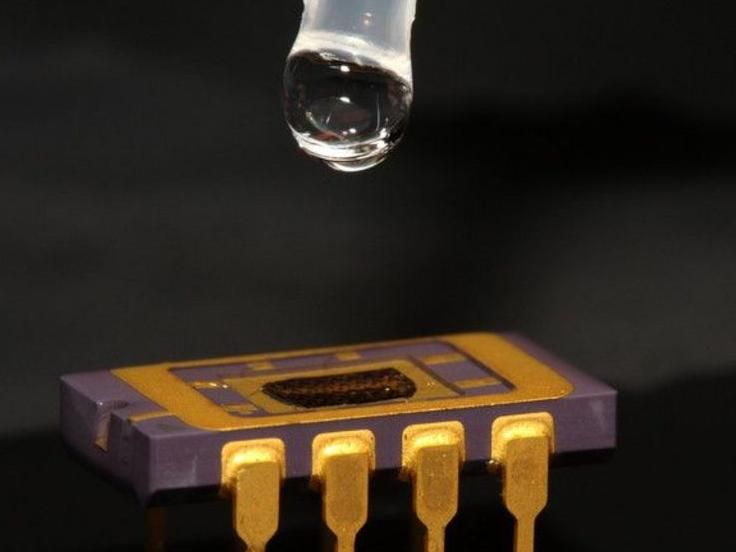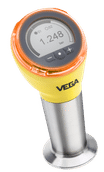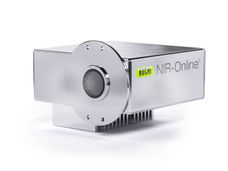One drop of the liquid is enough to determine the composition.
Chemical sensor on a chip
Advertisement
You can't see them, but they are perfect for studying liquids and gases: Laser beams in the infrared range are absorbed to different degrees by different molecules. This effect is used, for example, to measure the oxygen concentration in blood. At the Vienna University of Technology, this simple principle has been taken up and a new sensor prototype has been realized on this basis.

TU Wien
Specially designed quantum cascade lasers and light detectors are manufactured on a chip at the TU Vienna in the same manufacturing process. The distance between laser and detector is only 50 micrometers. This is bridged with a so-called surface plasmon waveguide made of gold and silicon nitride. This new approach enables the simple and cost-effective production of tiny liquid sensors for a wide range of applications.
Laser and detector
Ordinary crystal lasers, such as the well-known red ruby laser, consist of only one specific material. Quantum cascade lasers, on the other hand, are composed of a perfectly optimized sequence of different material layers. This makes it possible to specifically control important properties of the laser, such as the wavelength of its light. When an electrical voltage is applied to the artificially created layer structure, the laser begins to shine. However, the layered structure can also be used as a detector in the opposite direction: If you irradiate it with light, an electrical signal is generated.
At the Vienna University of Technology, a method has been developed to produce a laser and a detector simultaneously on a chip from the same layer sequence - in such a way that the wavelength of the laser light corresponds exactly to the wavelength of the detector. This bifunctional material is fabricated atomic layer by atomic layer at the Center for Micro- and Nanostructures at TU Wien using molecular beam epitaxy. "By fabricating them together, you don't have to adjust the laser and the detector - they are optimally placed on the same chip right from the start," says Benedikt Schwarz from the Institute of Solid State Electronics at TU Wien.
Light guidance from the laser to the detector
In conventional optical systems, the generated laser light must be guided to the detector using precisely adjusted lenses. Glass fibers can also be used, but they normally only transport the light inside them, i.e. they do not bring it into contact with the environment and are then not suitable as sensors.
In the new device presented by the TU Vienna research team, the optical connection between the quantum cascade laser and the detector works completely differently. It is a plasmonic waveguide consisting of gold and silicon nitride. "The light interacts with the electrons in the metal in a very special way, so that the light is guided on the outside of the gold surface," explains Benedikt Schwarz. "This allows the light to be absorbed by molecules on the path between the laser and the detector."
The finished sensor chip can be immersed in a liquid. The composition of the liquid can then be inferred from the attenuation of the light signal by absorbing molecules. This sensor was tested with a solution of water and alcohol. The water concentration can be measured in this way to an accuracy of 0.06%.
Due to the possibility to adjust the wavelength by the design of the layer sequence, the sensor concept can be applied to a wide range of molecules such as hydrocarbons or even proteins for various applications in chemical, biological or medical analysis.
Note: This article has been translated using a computer system without human intervention. LUMITOS offers these automatic translations to present a wider range of current news. Since this article has been translated with automatic translation, it is possible that it contains errors in vocabulary, syntax or grammar. The original article in German can be found here.






























































